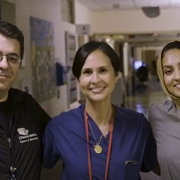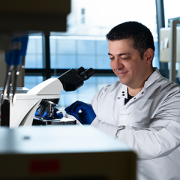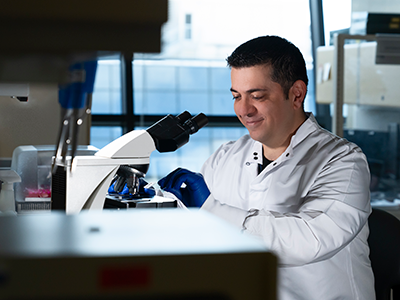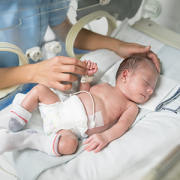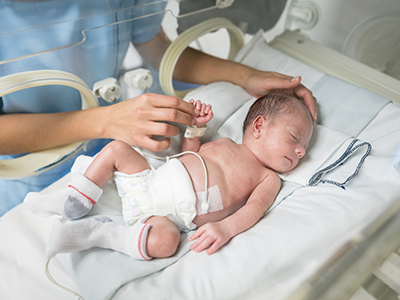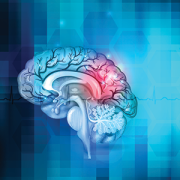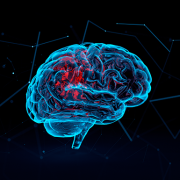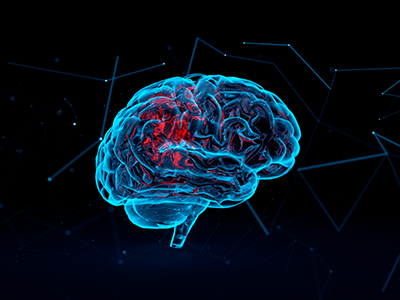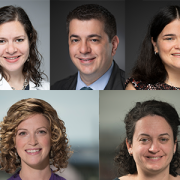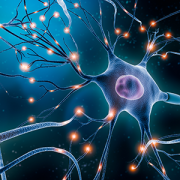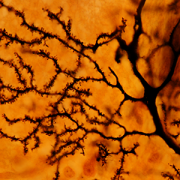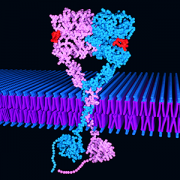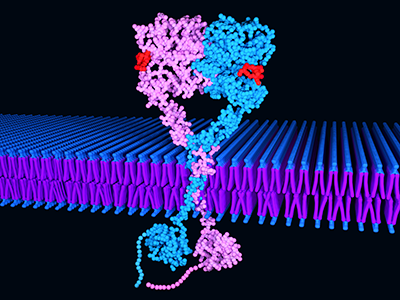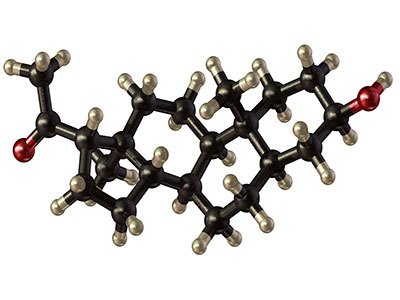
A new study from Children’s National Health System and Drexel University College of Medicine has identified a promising treatment to reduce or prevent brain injury in newborns who have suffered hypoxia-ischemia.
Research-clinicians at Children’s National Health System and Drexel University College of Medicine led the first study to identify a promising treatment to reduce or prevent brain injury in newborns who have suffered hypoxia-ischemia, a serious complication in which restricted blood flow deprives the brain of oxygen.
Consequences of brain injury resulting from oxygen deprivation affect the entire lifespan and range from mild (learning disabilities) to severe (inability to breathe, walk, talk or see). This complication can occur during or before birth due to maternal/placental problems, such as placental abruption or cord prolapse, or due to fetal/newborn issues, such as asphyxia due to labor difficulties, infection, fetal-maternal bleeding or twin-to-twin transfusion.
Published in Neonatology on Oct. 13, 2017, the study evaluated newborn experimental models exposed to hypoxia-ischemia. The experimental models were given standard cooling therapy (therapeutic hypothermia) alone and in combination with a selective Src kinase inhibitor, PP2, that blocks a regulatory enzyme of apoptosis (cell death), which intensifies as a result of hypoxia-ischemia. The Food and Drug Administration has approved a Src kinase inhibitor as an oncology treatment. This study is the first to test the benefits of blocking this enzyme in reducing the neurological damage caused by brain hypoxia-ischemia.
“In hypoxia-ischemia, CaM kinase is over-activated, but hypothermia has been shown to decrease this enzyme’s activation. We theorized that a Src kinase inhibitor, in addition to hypothermia, would further attenuate the activation of CaM kinase IV and that the result might be less brain damage,” explains Panagiotis Kratimenos, M.D., Ph.D., the study’s lead author, and a specialist in neonatology and neonatal neurocritical care at Children’s National. “From this study, we were pleased that this seems to be the case.”
The research team assessed neuropathology, adenosine triphosphate and phosphocreatine concentrations as well as CaM kinase IV activity. The CaM kinase IV activity in cerebral tissue was 2,002 (plus or minus 729) with normal oxygen levels and in normal temperatures, 4,104 (plus or minus 542) in hypoxia with hypothermia treatment, and 2,165 (plus or minus 415) in hypoxia with hypothermia treatment combined with PP2 administration.
The authors conclude that hypothermia alone attenuated the over-activation of CaM kinase IV and improved neuropathology after hypoxia. However, the combination of hypothermia with Src kinase inhibition following hypoxia further attenuated the increased activation of CaM kinase IV, compared with hypothermia alone in the newborn experimental model brain.
Currently, the only treatment for hypoxia-ischemia is therapeutic hypothermia. Starting in the first six hours of life, doctors in the neonatal intensive care unit lower a baby’s temperature by about 3 degrees Celsius for three days. This therapy is proven to reduce neural defects by up to 30 percent, yet many infants still have poor outcomes even after the therapeutic cooling treatment.
“In oxygen deprivation of the brain, the pathways leading to cell death are over-activated, including the nuclear enzyme CaM kinase IV. We sought to intervene in this pathway to reduce the heightened cell death, which leads to brain damage,” explains Dr. Kratimenos, an assistant professor of pediatrics at The George Washington University School of Medicine and Health Sciences whose research focus is neonatal encephalopathy and therapeutic hypothermia.
To continue preclinical research into this approach, Dr. Kratimenos envisions studying the effect of other types of small molecule inhibitors to target the apoptotic cascade, perhaps in multiple doses, eliminating the potential side effects, and determining the best dose and duration of treatment.
“If confirmed by further studies, this approach─in combination with cooling─may help to further attenuate neurological damage that babies suffer after experiencing hypoxia-ischemia,” says Dr. Kratimenos.
The study co-authors include Ioannis Koutroulis, M.D., Ph.D., a faculty member in Children’s Division of Emergency Medicine; and Amit Jain, M.D.; Shadi Malaeb, M.D.; and the world-renowned neonatologist and pioneer in bioenergetics of the brain, Maria Delivoria-Papadopoulos, M.D., all of the Drexel University College of Medicine.


